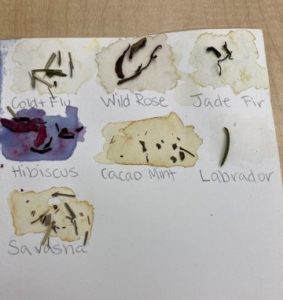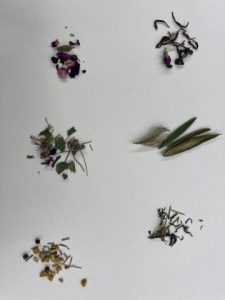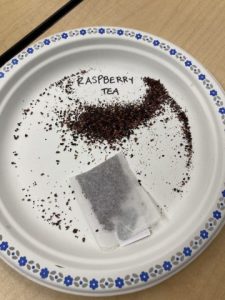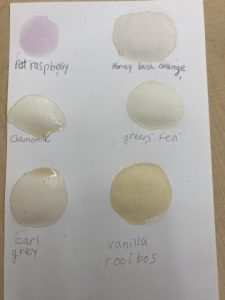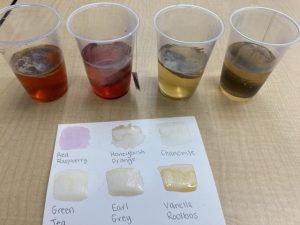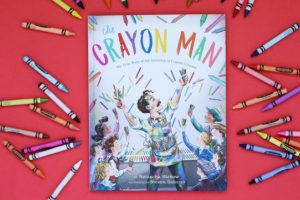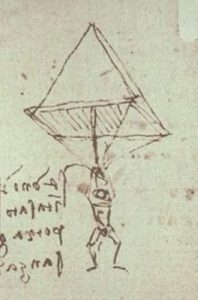Hello, Scientists! I hope that everyone is taking great care of their terrariums.
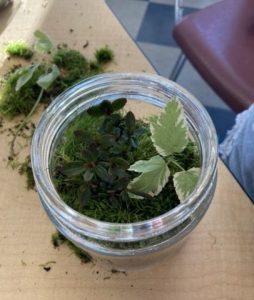
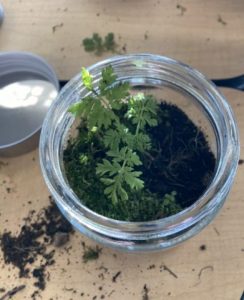

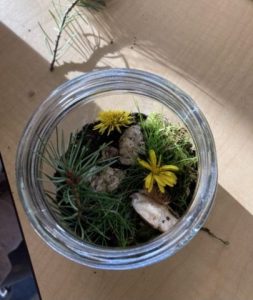
Look at the variety of local plants, mosses, and other natural objects we used for our terrariums!
Remember, because it is a self-contained ecosystem, the plants should be able to survive without being watered. You should notice condensation (mist/drips) on the inside of your glass jar. If your terrarium looks dry (or if an insect managed to sneak into your terrarium), feel free to quickly open the jar to make changes!

